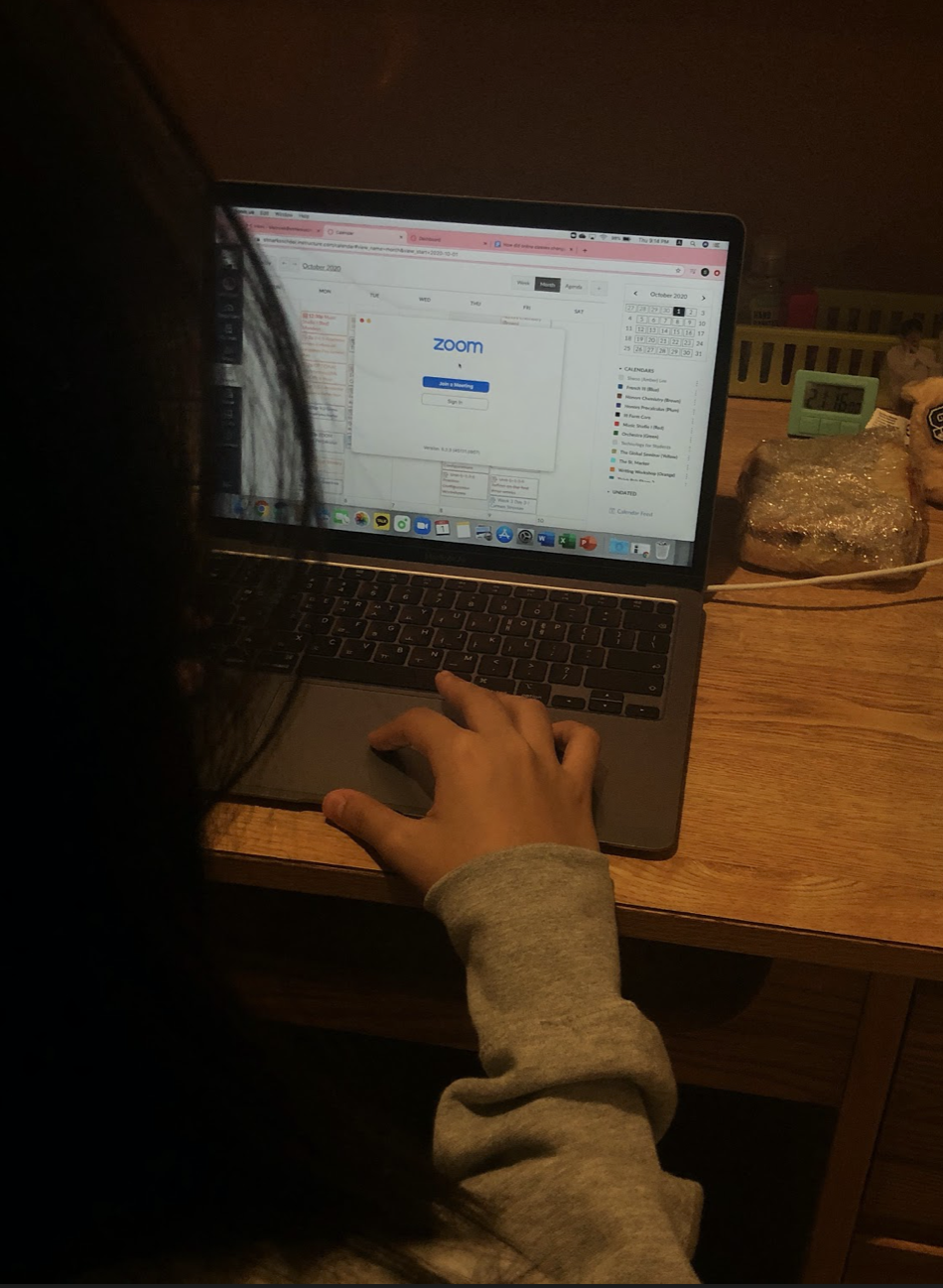By Coco Chen ‘24
With the closing of Window 1, students have completed their assessments and group projects, received their grades for each course, and reflected upon their learning experiences. The remote students are especially faced with challenges due to geographical, technological, and social obstacles. They have become more accustomed to using Zoom throughout these two months of remote learning, but remote learning could still not fully replace in-person learning.
With the end of daylight savings time, there is now even a greater time difference for remote students who live in different time zones. Although not required, Many remote students attend classes after 11:30 pm at night and before 7:45 am. Remote students who attend the late-night classes experience irregular sleeping patterns and unhealthy lifestyles. Brandon Tang, a junior connecting from Shanghai, China, says he “wakes up really early in the morning for ‘evening’ classes when [he] went to bed at 4 am the night before.” Yolanda Zhou, a freshman from Beijing, China, has been trying her best to adjust to school life, but this has become “even more difficult for [her] by [attending] classes at night.” Olivia, a Junior from Singapore, is disappointed that she has to miss several synchronous classes every week and can only attend classes at night. She shares that the evening blocks made her forget what it feels like to have classes in the morning with her classmates.
Remote students also feel disconnected from the community. They stay at home, stare at their computer screens, and do all the extra-curricular activities alone. In particular, upperclassmen find it hard to fulfill their leadership duties, such as Olivia, the dorm prefect of Pine/Oak this year. She cannot physically meet and talk with the girls in the dorm as she wants to, and Zoom meetings are an unsatisfying alternative. She also misses hanging out with her friends in the dorm. Yolanda also shared that she cannot connect with the teachers as well due to the time differences, which sometimes result in delayed feedback for her assignments.
Despite these conflicts in the schedule, remote students try to make the best of this experience and stay optimistic. Yolanda has learned some “valuable and essential skills like time management and not procrastinating during this time” to be more efficient. She has also realized the importance of centering herself amid a busy life, and she “[squeezes] out some time for sports to relax.” Olivia is grateful for her teachers, who offer to meet with her individually outside of the normal synchronous blocks she cannot attend. She reflects that the experience has “really taught [her] how to appreciate everything that [she] used to take for granted.” If anything, the pandemic taught the remote students to stay optimistic and be grateful for the support from their teachers, advisors, and parents.


